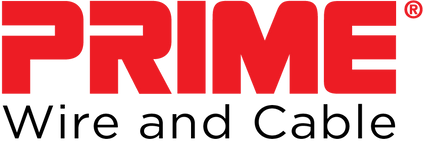
What Do PRIME® Extension Cord Rating Designations Mean?
How to read your extension cord.
What Do PRIME® Extension Cord Rating Designations Mean?
Embossed on each PRIME® cord is a letter designation that defines the type and approved use of the cord.
You will see that each PRIME® extension cord carries one of the following designations:
Prime Outdoor Vinyl Extension Cords
- SJTW (UL) Water Resistant or C(UL) SJTW FT2
- STW (UL) Water Resistant or C(UL) STW FT2
PRIME All-Weather TPE-Rubber Extension Cords
- SJEOW (UL) Water Resistant or C(UL) SJEOW FT2
- SEOW (UL) Water Resistant or C(UL) SEOW FT2
PRIME Rubber Extension Cords
- SJ (UL) Water Resistant or C(UL) SJ FT2
- SJO (UL) Water Resistant or C(UL) SJO FT2
- SJOW (UL) Water Resistant or C(UL) SJOW FT2
- SO (UL) Water Resistant or C(UL) SO FT2
- SOO (UL) Water Resistant or C(UL) SOO FT2
- SOOW (UL) Water Resistant or C(UL) SOOW FT2
S – The “S” at the beginning of all designations state that the cord is Hard Service flexible cord for general use.
P – Parallel construction, usually insulated and used in products such as household extension cords, air conditioner cords and low voltage landscape cable.
J – The “J” after the “S” defines the jacket of the cord as being the standard 300 volt insulation type currently used on most extension cords. The absence of the “J” defines the cord jacket as an extra hard service 600 volt insulation type defined by PRIME® as our “Double Jacket” cord because the outer cord jacket is roughly twice the thickness of the “J” jacket that is normally used in outdoor extension cords.
V – Vacuum wire, softer and more flexible than standard SJT, usually found on retractable cord reels and vacuum cleaner power supply and extension cords because it holds up to constant winding and unwinding but still maintains its shape.
T or E – This letter defines the material the insulation and jacket are made from. “T” defines the insulating material as PVC (vinyl) thermoplastic. The letter “E” defines the insulation and jacket material as TPE–thermoplastic elastomer rubber.
O – The letter “O” defines the cord as being Oil Resistant. This was especially designed because most rubber type cords would break down and lose insulating performance when exposed to oil or grease.
W – This letter designates that the cord has been rated for outdoor use. As part of this rating, the different insulation and jacket compounds must meet the following use temperature ranges. UL sets a use temperature range of the
“T” PVC vinyl material at -31°F to +140°F (-35°C to +60°C). PRIME® has formulated the PVC vinyl compound in our products to exceed this nominal range by approximately 5°F. UL sets a use temperature range of the “E”
TPE-rubber material at -58°F to +221°F (-50°C to +105°C). PRIME® has also exceeded this range by approximately 12°F.
(UL) – This defines the cord as being Underwriters Laboratories listed. UL allows the use of the logo in parenthesis rather than a complete circle on round product, like a cord.
Water Resistant – Most of Prime’s outdoor cords are now made with water resistant material. Standard vinyl and TPE-rubber cords have a tendency to absorb water if left lying in a puddle on the job site. When water comes in contact with the copper wire it starts to corrode. If the water remains in the cord it could build up until a shock path is created. When water gets in a cord its life is shortened.
CSA – Defines the product as meeting Canadian Standards Association requirements. The CSA logo is usually not abbreviated.
C(UL) & C CSA US – Since the NAFTA agreement with Canada, UL and the Canadian Standards Association, CSA, have worked together to allow CSA to list products for the USA and for UL to list products for use in Canada. The
C(UL) designation says the product was tested and certified by UL to Canadian Standards and the C CSA US mark signifies that CSA tested the product and certifies it to the UL Standards.
FT2 – This letter group defines the product as being flame retardant. If a standard vinyl or TPE-rubber cord catches on fire, the flame can quickly burn the entire length of the cord. The PRIME® jacket insulation material will prevent the spread of combustion along the cord. The cord will extinguish the flame within 30 seconds of the heat source being removed.
CL2 – Or “class 2” is a UL rating for wire that can be used for in-wall construction. Usually applies to communication cable or speaker wire.
SRDT – Is heavy duty wire made specifically for use with higher amperage equipment such as ranges, dryers and mobile home power hook-up cords. Not very flexible.
HPN – Is high-heat parallel neoprene wire made specifically for use with clothes irons, portable heaters and other such applications where high temperatures of the appliance could affect the power cord’s performance.
